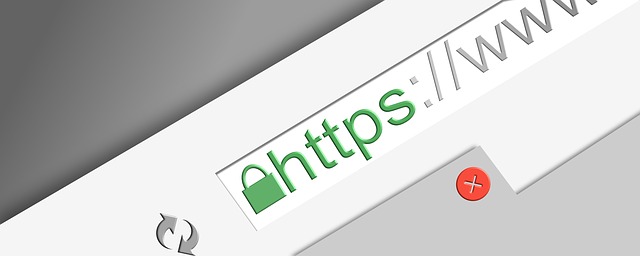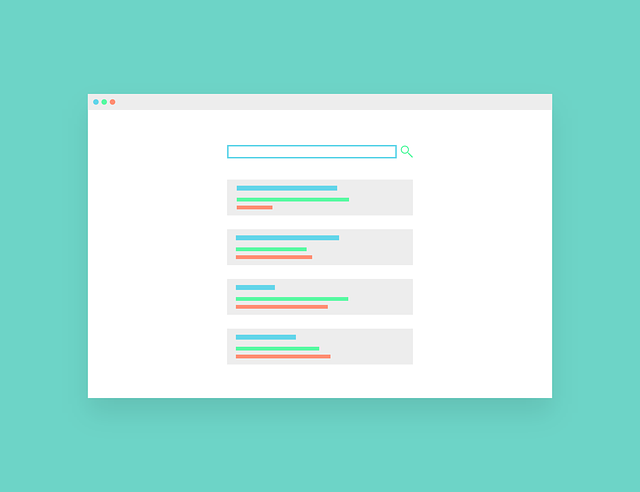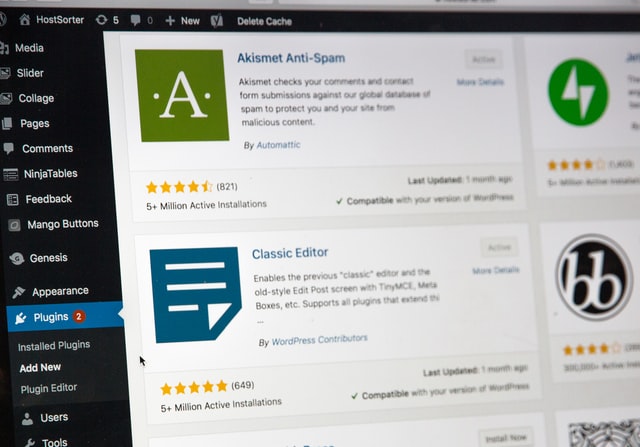If you’re devoting any amount of resources to technical SEO in 2022, then you should know that website security should be one of your top priorities right alongside it.
Making your website more visible to searchers on Google is one thing. It’s another to secure your site for customer financial transactions and to keep out hackers.
The thing is, these days, if your website security sucks, your SEO could suffer, as well. Those two things may not seem directly related, but think about it: no one trusts an unsecured website. If people don’t trust you, they won’t go to you.
And Google will see that and respond with machine-like indifference by cutting your rankings.
So, you’ll need to know how to secure your website. The good news is that there are some simple ways to do it!
Here are seven easy ways to increase your website security in 2022.
1. Install an SSL Certificate to Get an HTTPS Website
We’ll start out with one of the most important steps: securing your site with an SSL certificate.
In 2022, it’s almost unheard of for a website not to be secured in this way. An SSL certificate ensures that hackers cannot access the information exchanged between two parties on a website.
Basically, SSL protection will take your site from unsecured HTTP protocol to HTTPS protocol.
Here’s a quick rundown of definitions:
- SSL certificate, or Secure Sockets Layer – encrypts communications on the Internet
- HTTP – Hypertext Transfer Protocol, an unencrypted form of data retrieval
- HTTPS – Hypertext Transfer Protocol Secure, an encrypted form of data retrieval
First of all, to get you the answer you’re looking for, you can get an SSL certificate right from your hosting provider, or request one from one of the many Certificate Authorities out there.
Some organizations offer SSLs for free. Or, an SSL could cost up to a few hundred dollars. It depends on the level of security you need.
Now, let’s dive into some more details of these elements and learn why they matter when it comes time to secure your website. This will be the longest section here, but this is the stuff you need to know to understand HTTPS fully.
Importance of HTTPS
HTTPS is a secure web protocol commonly used by ecommerce websites to provide secure transactions for its users. Google has been actively campaigning to website owners to convert to HTTPS and has been rewarding secure URLs with a minor SEO boost.

Google wants to provide users with a secure and beneficial web experience, so encouraging website owners to switch to HTTPS is obvious.
Making the switch to HTTPS might not benefit all website owners, and it requires careful research and action to make a clean conversion.
HTTPS does confer with Google’s metrics, but it mainly provides users and your business with security for any confidential transactions you conduct over your website.
Let’s go over the differences between HTTP and HTTPS, and whether you should convert your website to HTTPS protocol.
What Is HTTP?
Hypertext Transfer Protocol is an application layer protocol designed to transfer and receive information over the Internet.
An application transfer protocol presents how information is displayed to a user and does not discriminate how information is transferred from one source to another. HTTP is most commonly used to retrieve HTML text and other site resources.
HTTP is considered “stateless” and does not retrieve or store information from previous browsing sessions. The benefits of using HTTP equate to faster load times and better information display.
Websites that do not host confidential financial or user information use HTTP. Unfortunately, HTTP is not secure and is always at risk of a data breach from third parties.
HTTP + SSL
Websites began switching to the HTTPS client to conduct secure transactions and authorizations with its users. HTTPS is the same as HTTP, but with a layer of security attached.
HTTPS comes equipped with a Secure Sockets Layer to monitor and transfer data safely between two points, which is why search engines prefer HTTPS clients.
Nicknamed “Secure HTTP,” HTTPS is commonly used by banks, e-commerce websites, and any website that conducts financial and personal transactions.
In-depth: HTTPS operates the same as HTTP by establishing a connection to a server on a standard port. HTTPS utilizes TCP Port 443 by default creating two separate communications between HTTP and HTTPS.
SSL monitors information passed between two parties and ensures that data is not corrupted or stolen. SSL does not care how information is presented to the user, but HTTP does, which allows for the best information display possible with added security.
What SSL Offers
SSL is not the same as HTTPS, but both protocols work in conjunction with one another. SSL encrypts data being transferred between two parties, provides authentication for users, and ensures that data is not corrupted or altered during transmission. SSL is used to monitor data transmission in order to prevent “man-in-the-middle” attacks or data breaches.
SEO Benefits of HTTPS
Increased Rankings
In 2014, Google announced that websites equipped with the HTTPS client would receive a minor rankings boost over websites with HTTP.

This is merely a soft signal for Google. If two websites were presented with the same technical specifications and content relevance, Google would rank web pages with the HTTPS client over a website using HTTP. This could become a stronger signal in the future.
Login Not Secure
The release of Chrome 57 gave users in-form security warnings at the bottom of any form fields on sites that still run the HTTP client. In early 2017, Chrome also gave users a “Not Secure” warning for any HTTP websites that asked for login or credit card information. Imagine how users will perceive conducting a credit card transfer on your website when their browser is telling them it’s not secure.
Referral Data
Traffic passing through your HTTPS server is preserved as secure referral sources. Traditionally, when using analytics software, traffic passing through an HTTP server appeared as direct traffic.
Mobile
With Google’s new mobile index, it is encouraging websites to convert to HTTPS, and it could have a larger impact on rankings than desktop searches. In order to convert webpages to AMP, Google requires websites to be equipped with SSL, which could have a dramatic effect on organic mobile rankings.
Security
HTTPS ensures that your website is the correct site the server is supposed to be talking to. HTTPS also encrypts all user data, including financial information and browsing history, and protects against third party breaches.
Faster Browsing
Most browsers support HTTP/2, which provides browser enhancements over standard HTTP. When HTTPS is enabled, users will experience faster browsing speeds, as well as data encryption. Major improvements to TSL (Transport Layer Security) have made encryption more streamlined and adds negligible CPU load to servers supporting HTTPS.
Making the Switch
Many websites strayed away from obtaining HTTPS certificates due to financial concerns. The lengthy process that went into obtaining an extended validation (EV) certificate may be one of the reasons Google gave HTTPS client websites a rankings boost.
The non-profit Let’s Encrypt began offering free and automated domain validation (DV) certificates for websites, which offer many of the same cryptography and security benefits as EV certificates. Websites like WordPress automatically convert websites to HTTPS and industry giants like Amazon offer TSL certificates to many of their customers.
Activating an HTTPS security certificate has also become more streamlined and easier to conduct. Enacting a faulty HTTPS connection is worse than not having one, as it breaches user trust and still puts your website in peril.
Qualys SSL Labs provides testing tools for setting up a TSL connection. Often establishing an HTTPS connection may make third party data, such as JavaScript and images fraught with security concerns. The HTTP Strict Transport Security (HSTS) can be used to clear up content issues triggering security alerts.
Making the switch to HTTPS will ultimately rely on your business goals and whether it falls in line with your digital marketing strategy.
Unless your website conducts login information or financial transactions, it may be best just to avoid the headache or setting up a faulty HTTPS connection. Before deciding to make the switch read Google’s best practices regarding HTTPS implementation.
Whew, that was a lot of technical information! It’s vital nonetheless, but there are still plenty of other easy ways to increase your website security in the modern era.
2. Get Smart About Your Passwords
This one is so easy that literally every website owner out there should drop everything and do it right after reading this.
You have to get smart about your website passwords!
If you own a website, then you have at least two places to log into something right now: your website, and your hosting provider’s website.
If you’re using any kind of third-party tools as you go, though, you’ll have sign-ins for those, too.
Here’s the rub on passwords: you’ve heard it before, but you have to make unique, uncrackable passwords for each of your logins.

A lot of times, people are okay with devising tough passwords, but then they use them across every login they have.
The best practice of website security is to make passwords that are both unique and uncrackable for every account. Keep them somewhere safe on a separate device or even on paper.
Strong passwords are vital to ensuring the security of your website, and thinking them up is much easier than dealing with a site hack somewhere down the line.
3. Enable Two-Factor Authentication
Next up is two-factor authentication, a practice that has picked up steam in the last few years and has really become standard as one of the best ways to improve cyber security.
Two-factor authentication, or 2FA, is a security process in which a user attempting to log into something has to prove they are the account holder by means of another electronic device.
So, say you’re logging into your bank account, and you input your username and password. You still can’t log in until you provide the code that the bank sent to your phone number that’s on file.
Once you do, you’re in.
That’s 2FA, and it’s just an extra layer of security that comes a lot closer to guaranteeing that the only person logging into your stuff is you.
Google Authenticator is a popular app for 2FA purposes, by the way.
4. Regularly Update Your CMS Features and Plugins
This is a list of easy ways to increase your website security, so here’s another easy thing: keep your website and any associated plugins updated at all times.
Plugins apply to WordPress, of course, but seeing that WordPress is the most popular CMS in the world, this makes sense to mention.
When you see there’s a new version of WordPress or any of the plugins you have there, or an update of whatever CMS you’re using, always try to update as soon as possible.
CMSs and plugins get updated usually to add something new, whether it’s a new capability or a security patch. Obviously, to leave an outdated plugin on your website is just inviting trouble.
Security patches are made for a reason, and you shouldn’t ignore them.

Even when you use a web developer who knows how to build a secure website, you’ll get all the right plugins from them, but it will be up to you as you go to keep things up to date.
Hackers know how to exploit any weakness in your system. While an outdated plugin might not be a huge deal for a simple blog website, a security breach could be catastrophic for an ecommerce website that stores customers’ financial information.
So, it turns out to be a simple fix: when you see things are eligible for updates, update them.
5. Back Up Your Website
While we’re talking about the safety and security of your actual website itself, always be sure to back up your website to a secure location, such as your personal computer or a hard drive.
This is for several reasons:
- A security breach
- A server failure
- A new theme or plugin that corrupts your website
No matter what happens to your website, if you lose data, you could very well be out of luck. Backing up your website data to a secure location is just prudent. So is backing up your backup.
If you’re on WordPress, UpdraftPlus is the most popular plugin for backing up site data.
SquareSpace doesn’t let you back up a website exactly, but you still can, kind of. Just duplicate your site and individual pages, and always save your content where you wrote it, such as in Microsoft Word or Google Docs.
Meanwhile, Shopify lets you export CSV files and your site’s theme to generate what is essentially an offline backup of your website.
You should always back up your website before implementing any major changes, and as we said, security breaches are always a threat. Backups are pretty easy to make these days, though, so be sure that you do.
6. Be Mindful of Comments You Allow
Not every website security breach results from some hacker in a hoodie using a laptop in a dark room.
There are plenty of automated spam attempts to compromise your website or just your device in general.
Over our years as digital marketing experts, we’ve seen plenty of spam comments come into a blog’s inbox, promoting random “products” and providing spammy links.
That kind of thing is almost always a phishing or malware attempt, and it’s best cut off from the get-go. On WordPress, you just have to select the option to approve comments manually before they post.
Once you do that, you’ll still see them all come in, but you’ll have the option to trash the comments or report them as spam before any of your viewers can see them and get hacked themselves.
7. Install Security Features
Finally, and this is a vital one, if you have a WordPress site, you should most definitely install one or a few security plugins to help protect your website as you go.
We’ve seen most of our clients prefer Wordfence for this. Even the free version scans your site for spam, gives you a firewall, and stops brute-force attacks on your site. You can upgrade to a paid version for more features, such as comment spam detection and country blocking.

Then there are other WordPress security plugins such as Defender, Jetpack, and Sucuri, but they all perform more or less the same functions.
If you want to take most of the worry out of having your own website, just install the security plugin of your choice and carry on.
Let LSEO Help with Your Website Security
You don’t have to be a web developer to know how to secure your website. The tips above are meant for everyone, from the master down to the beginner.
Whether it’s getting an SSL, improving your password quality, or backing up your website regularly, you can do your part toward website security.
If you need some help locking things down for your site, hit up the experts here at LSEO.
